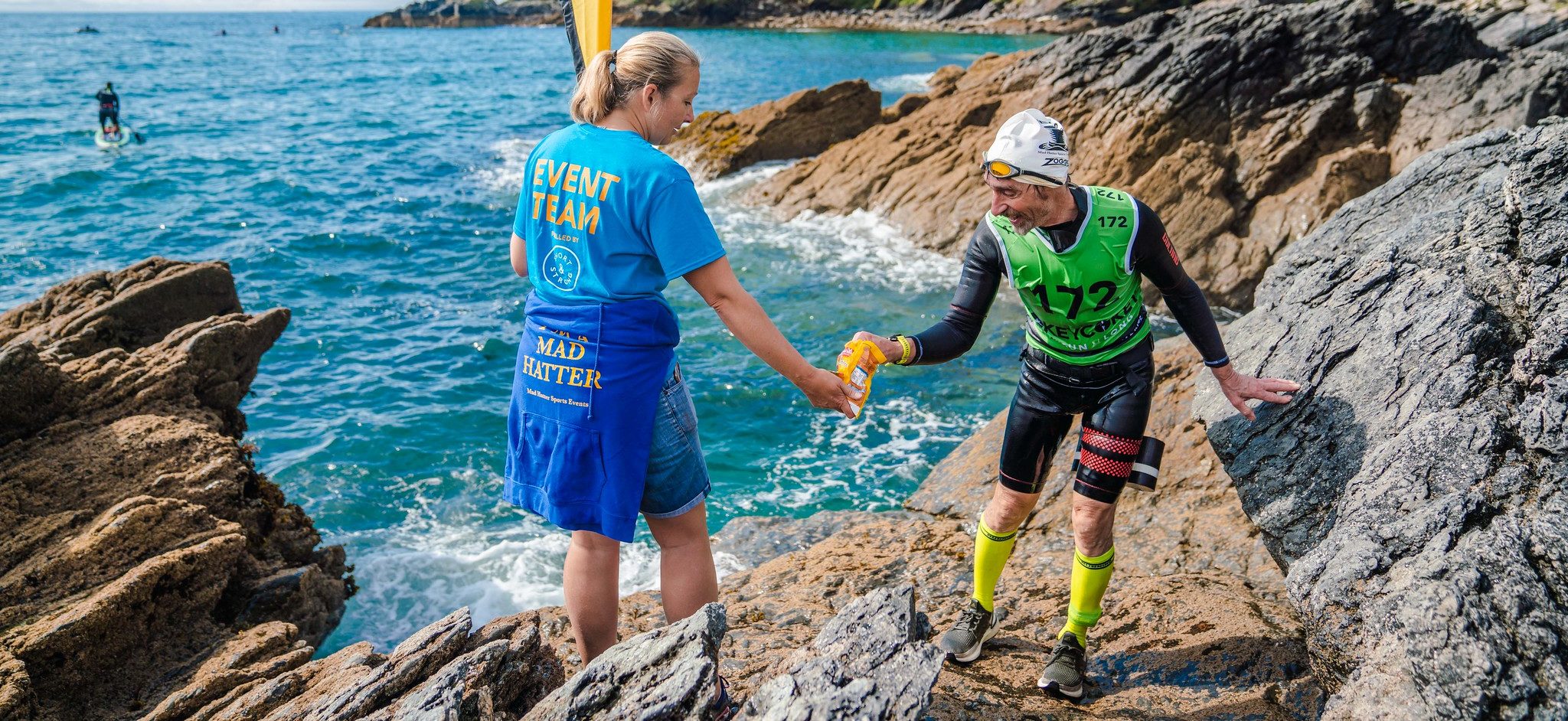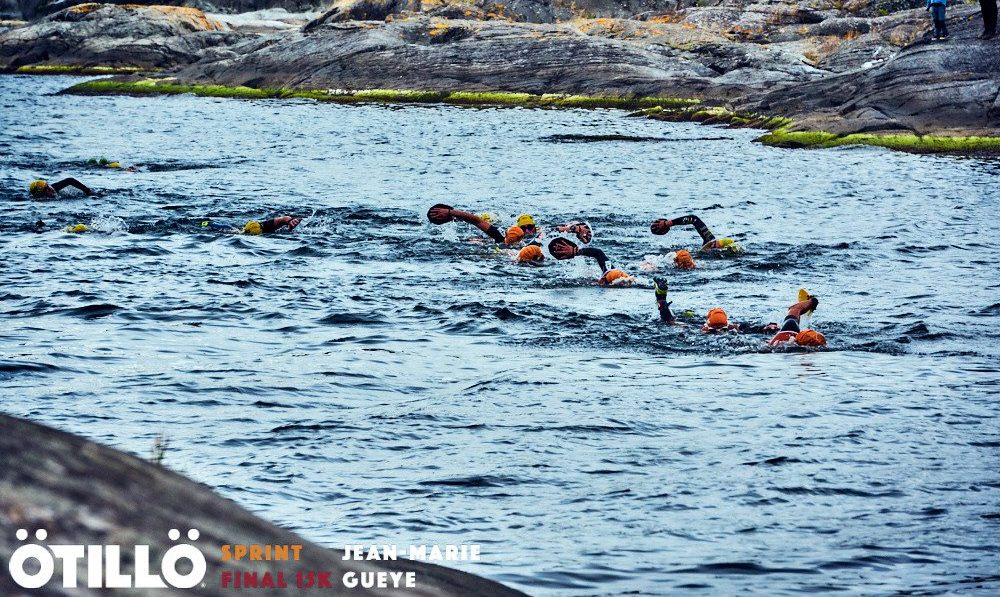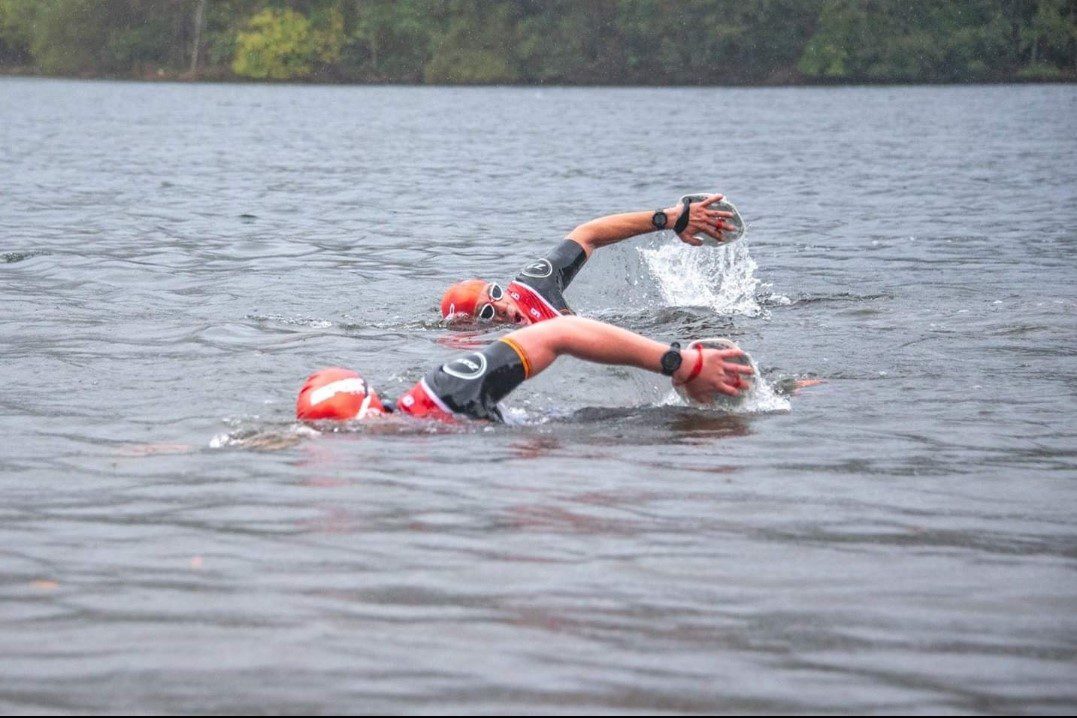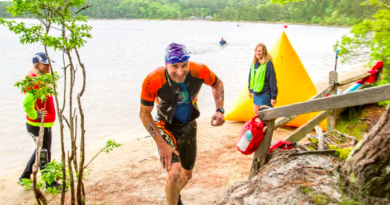5 Lessons From A Debut Year In Swimrun
By Alex Juggins and Samuel Nicoll of the Ashdown Amphibians.
Swimrun is still very much in its fledgling years in the UK, so there aren’t many people on these shores who can claim to be an expert in training and racing. We are certainly not claiming to be experts either, but as the sport continues to grow in popularity at both a ‘complete’ and ‘compete’ level, we feel it’s important that those with some experience and knowledge are willing to share it.

With that spirit of altruism in mind, we have set out some key observations from our first year in swimrun, which we hope will prove useful to the budding swimrunners out there.
A caveat: if your swimrun goal is simply to challenge yourself and get a feel for the sport, you can probably ignore a lot of what follows. The below is aimed more towards those who want to go ‘full beans’ (be warned – once you do, there’s no going back).
1. It takes two to swimrun
In its purest form, swimrun is a team sport. The solo side of racing will undoubtedly grow in popularity, but for us, the essence of swimrun is in the teamwork and partnership. We would therefore encourage all would-be swimrunners to consider entering the sport as part of a team if you can – it will enrich your experience more than you can imagine. If it’s the solo pursuit you’re after, scroll on down to the next sub-heading.
Find a partner who’s a similar ability to you across both disciplines, work out your goals, train to the same level – and you’ll be in a great place
Choosing the right swimrun partner is one of the most important contributors to your success and enjoyment in the sport. If you can find someone to train and race with who is not only the same ability as you, but who also shares the same level of commitment and aspirations as you, then you’ve struck upon something special.
We are very lucky that we’ve been friends for over 20 years and still live close to one another, so we are able to train together multiple times a week. This may not be practical or even remotely possible for everyone, but it’s so useful for keeping your fitness, progress and motivation aligned. By training together, you also find out your partner’s thresholds and limitations, you learn to recognise when they might need moral support, and you discover how to work together to navigate those dark moments.

Training together is not a necessity; there are plenty of successful teams who don’t train together but who race well. In these circumstances, though, regular communication is key. Check in with each other, provide feedback on training sessions and progress, and keep each other accountable. It makes it less likely that you’ll miss that early morning swim if your teammate did theirs yesterday…
When it comes to racing, you’re only as fast as the slowest person in your team. Whilst it’s not imperative that you’re exactly the same ability on both disciplines, we believe that to be competitive you need to be in the same ballpark, as you can’t be ‘carrying’ a real weakness. Slight discrepancies are inevitable, even from one week to the next, but the beauty of having a teammate is that there are ways to manage off-days and minor differences by distributing the workload in favour of the ‘stronger’ partner
2. It’s all about the gear
Every swimrun article you read will tell you that gear is of paramount importance. No surprises there, but in our experience certain pieces of equipment are more essential to performance than others. The reality is you’re going to have to part with some cold hard cash, but there are some things you should know.

A pull buoy is undoubtably one of the most essential items on your list. Your soaked trainers will become an anchor in the water if you don’t keep your hips and legs up, so adequate buoyancy is a must. If you’re really serious, leave your traditional swimmer’s pull buoy at home and invest in an absurd European-style buoy. These really are a game-changer.
Paddles are also fundamental, as they provide the additional power and propulsion needed to overcome the increased drag. Paddle size is a hotly debated topic, but our advice is simple: use the biggest paddles you can manage and allow for plenty of training adaptation. You don’t want to have paddles that are too big, as they can negatively impact speed by increasing fatigue and lowering stroke rate. This is particularly true in choppy conditions.
Hot paddle tip: within reason, bigger is better

The wetsuit. The biggest expense, and a crucial part of your swim running regalia. However, you’ll notice that we listed pullbuoy and paddles first, and that’s because we feel they’re more fundamental to success. Make no mistake, there’s no substitute for a specific swimrun wetsuit, but we believe there are only modest gains between an entry level suit and the top suits on the market (which could be six times the price). That’s not to say that the top-end suits aren’t exceptional – particularly when it comes to running comfort – but it’s more important that you get a suit that fits well, with good range of motion in all the right areas.
Running shoes are obviously an important part of the kit, but again we’ve found very little difference between specific ‘swimrunning’ shoes and a good pair of trail shoes.
As long as the shoes you’re using are comfortable (you’re going to be in them for long periods of time), have good grip (for the tricky trails and swim entries and exits), and expel water well, then you’ll be fine.
Choose your shoes based on their running credentials, not for any tiny gains you may achieve in the water
When it comes to the miscellaneous items like socks and goggles, there’s plenty of choice out there, but don’t get too bogged down in the minutiae. It’s worth investing in some swimrun-specific socks and open water-specific goggles, but beyond that it boils down to what works best for the individual.
3. Train to be a swimrunner – it’s a sport in its own right
During the myriad occasions where we’ve been boring people to death about our new hobby, one of the most common responses is “Oh, I get it, it’s like a triathlon”. OK, there are some obvious similarities, but to approach swimrun in the same way you would a triathlon (or indeed a trail running event of open water swimming event) is a dangerous game.
Swimrun is a sport in its own right, and it requires specific training and preparation. This means training in full gear, regularly practicing transitioning from water to land – and back again – and learning how to ‘flow’ from one discipline to the other (reality check: it rarely feels like this).

The perfect prescription of swimrun training will depend on your endurance background, time available and your ambitions in the sport. As a baseline, we would recommend two swims, two runs and a strength and conditioning session each week. The top teams in the world will obviously be doing far, far more than this! However, unless you’re harbouring aspirations to win ÖTILLÖ you can forget what the super Swedes are up to.
In our view, the key to a successful swimrun training plan is specificity. This is something we learned the hard way during our first season. The point is this: blasting out rapid 100m sets in your regular trunks or costume is great, but it’s not swimrun specific.
Likewise, pounding 1km reps on the road might look great on your Strava profile, but it sure as hell isn’t getting you ready for the demands of a hilly coastal swimrun. With that in mind, over the winter and spring we could recommend that you dedicate one swim session a week to swimrun-specific fitness and skills. Use a pullbuoiy and paddles for as much of the session as you can and add increasing levels of drag over time.
By March/April, we plan to be doing a weekly pull-buoy and paddle session in tracksuit bottoms and vests to mimic the drag of shoes in open water. Translating pool fitness into open water fitness isn’t always as straightforward as you might think, but training is this way can help to smooth that transition.

That said, as soon as you can face the bracing cold of the sea or your local lake (we’re probably talking mid-April here), add a weekly open water session in full swimrun gear to your training mix. The more of these sessions you can get under your belt before the season starts, the better. That first swim of the year in wetsuit and shoes is always going to be a killer, but your winter training can go some way towards mitigating the pain!
On the running side, you need to train to run ‘strong’ not fast. Running in a swimrun event is hard going – you’re restricted by the wetsuit, you’re carrying a pullbuoy and paddles, and you’re invariably hauling yourself up and down technical trails. So, get off the roads and onto the trails.
Run hills – lots of them – and get used to running fatigued and weighed down (wear a trail pack with fluids, gels etc.). Stop worrying about pace and start worrying about efficiency and strength.

Then there’s the pure joy of combining the two together in a weekly swimrun session from late Spring onwards. There really is no substitute for actually swimrunning in your preparation! It enables you to get your transitions dialled in (preferably in the company of your teammate) and learn how each of you deals with the sensation of swapping between the two sports. Some people really struggle getting up to speed in their running after being horizontal, while others may have issues with cramp and muscle tightness when jumping back into the water. Work these things out in training – not during a race!
Try to nail two or three ‘big’ swimrun sessions in the six weeks before a race.
Finally, it would be remiss of us not to mention strength and conditioning. The demands of swimrun place an enormous amount of strain on your body. Swimming with dinner plates on your hands and running with soggy shoes and additional weight can really put your muscles through the ringer, so you need to make sure you have the requisite strength to train and race safely.
For the typical time-crunched swimrunner, cramming a gym session or two into your week can seem like a chore. However, you can make a real difference to your all-round conditioning and injury resistance with just a weekly 45 min session. Serious coaches will say this isn’t enough, but we’re just being realistic! The key areas to focus on are: shoulder strength and mobility, lats, core, glute activation, single-leg exercises that engage the quads/hamstrings, and some lower leg conditioning.
4. You are what you eat (and drink)
Making sure you have enough energy for long durations at a relatively high intensity is essential for any swimrunner. Running in a wetsuit is deceptively dehydrating, and many an athlete has succumbed to that ‘boil in a bag’ feeling during a race. Swimming in cold water can also lull you into a false sense of hydration. Don’t be fooled!

Having the correct fuelling and hydration strategy is therefore one of the most fundamental parts to race success. There are some excellent podcasts and articles out there already, mostly featuring the specialists at Precision Hydration, so we would encourage everyone to consume that content if you want a really deep dive into this aspect of the sport. It took us a full season to really understand the nuances of fuelling and hydration, and it really cannot be overstated just how important it is.
In practice, everyone’s personal strategy on when to fuel and hydrate will differ, but as a general rule, if you are feeling really fatigued and lacking in energy, you have already left it too late. Our basic fuelling strategy is to ‘take on a gel every 30 minutes’, and that seems to work quite well for us. We also make sure that we start each session/race well hydrated, necking some electrolyte drink in the build-up.
As with our training advice above, it’s imperative that you don’t go into a race without having ‘practiced’ your fuelling and hydration. How your gut handles carb intake on the fly is something that you really don’t want to be experimenting with during a race.
5. Enjoy the process and the experience
In just one season of swimrun, we’ve become hooked. Despite having lofty ambitions in the sport and wanting to finish on some domestic podiums next year, the truth is we’ve both relished the process of training, learning and experiencing something completely new. For those who are on the fence about entering a swimrun next year, we would simply say: do it. Show us a swimrunner who says they prefer triathlon and we’ll show you a liar!










